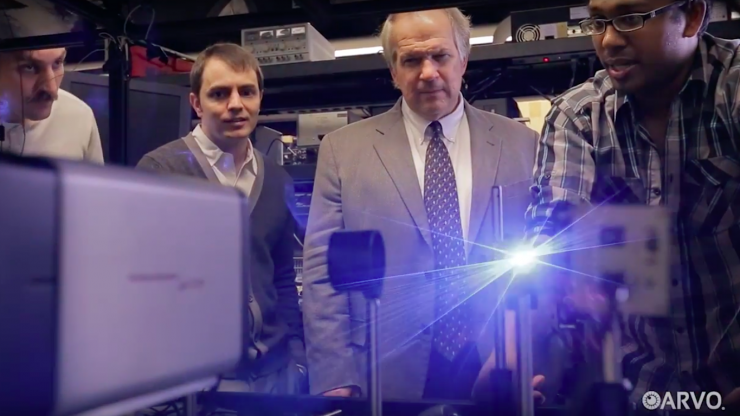
Joseph Izatt, the Michael J. Fitzpatrick Professor of Engineering at Duke University, recently served as the lead editor for a special issue of Biomedical Optics Express published April 1, 2017 in celebration of the 25th anniversary of the invention of optical coherence tomography (OCT). Izatt, who helped pioneer the technology as a postdoc at MIT, has focused much of his career on developing OCT, which is today a primary tool used for detecting and monitoring treatment of serious eye diseases in clinics worldwide.
With a joint appointment in BME and ophthalmology, Izatt is considered one of the leading experts in OCT, a medical imaging technique that allows researchers to peer beneath the surface of living tissues to diagnose and treat diseases. Although there are numerous uses of the technology, it is primarily used by eye doctors to detect and treat vision problems. To recognize how far work with OCT has developed, Biomedical Optics Express invited Izatt to organize the special issue of the journal, where he assembled a guest editorial board to curate articles and reviews about the various fields of OCT research.
“The anniversary was an opportunity to invite our scientific colleagues to reflect and write about the development of their subfields of OCT,” says Izatt. “We were pleased that so many authors were enthusiastic about contributing to the special issue.”
To celebrate the anniversary, the Association for Research in Vision and Ophthalmology (ARVO) also featured Izatt and his collaborator, Dr. Cynthia Toth, a professor in BME and Ophthalmology, in a series of videos about OCT. Together, the researchers discussed how Izatt and his team were creating handheld microscopes for imaging eye diseases in children, as well as operating room microscopes for live imaging during eye surgery, and showed how OCT is directly benefiting patients.